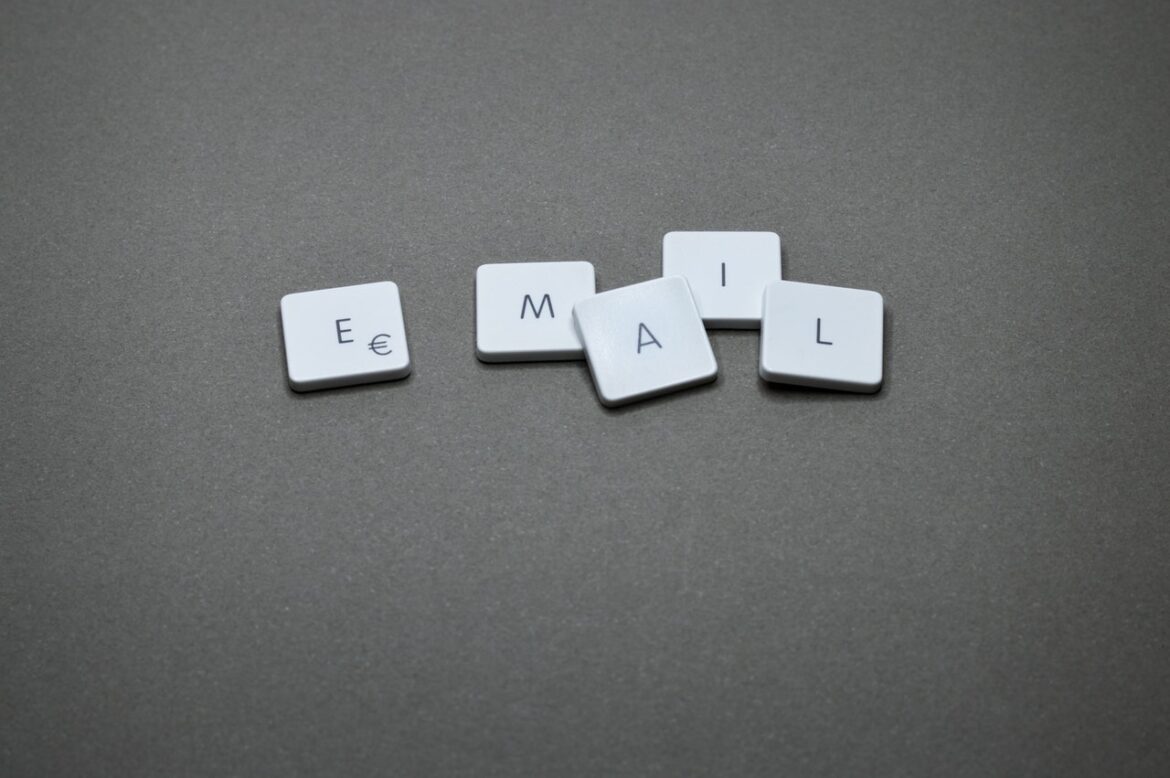There’s a good reason that security standards concerning analog or physical (snail) mail are extremely stringent. Mail can contain sensitive information that criminals can leverage to do serious financial harm to any person or business they’ve targeted. The same is true, and even more so, for email. That’s why email encryption tools are absolutely essential for all businesses that send their mail digitally.
Today, that’s just about every business in the running.
Top 5 Email Encryption Tools
Nowadays, encryption is a standard and essential element of many data storage and processing procedures. You see a similar form of it when a website’s account manager creates a unique password for you, typically using a string of numbers and letters. That randomness is part and parcel of many encryption protocols (you don’t want a hacker to be able to guess a password).
But encryption is more than just simply generating random strings of numbers and letters. It also involves complicated processes of determining who or what can decipher the codes, and why.
This guide will walk through five of the most common and useful tools for protecting your company’s precious emails, including:
- The best email encryption software
- Programs for patching vulnerabilities
- Other measures beyond email encryption
But first, let’s cover some ground on why you need to practice email security…
Schedule a Free Consultation
Why Do You Need Email Encryption?
Because it’s akin to an insurance policy for all your sensitive data transported via email. It functions as a last ditch damage control and impact mitigation technique.
Imagine this scenario:
- Your company has a relatively stable cybersecurity setup in place. You don’t field many attempted attacks, but you’re well aware of any that do occur. You carefully monitor all incoming and outgoing messages to ensure that everyone is following safety procedures. All in all, you’ve taken the most preventative measures you can.
- One day, the unthinkable happens: a data breach occurs, and all of your organization’s emails sent out that day are intercepted by hackers. They intend to rifle through its contents for key login or other biographical information for theft, fraud, or ransom purposes.
With encryption, they wouldn’t be able to do that, even if they got their hands on the emails.
That’s why encryption is one of the absolute…

Best Email Security Tools
Email encryption is an amazing technological innovation that uses a concept as old as language—cryptography and ciphers—and applies it in a contemporary context. It harnesses computing power and relies on human inability to crack a code generated by various algorithms. The math works to make letters and numbers unreadable by anyone, especially attackers.
While encryption is an extremely complex field within cybersecurity, it breaks down into two relatively straightforward categories, each with its own pros and cons:
- Transport level encryption – This system entails encryption of email contents when they are in transit between a sender and a receiver. It’s often simple to implement and affordable, but the trade off is less protection than the next option.
- End to end encryption – This system instead encrypts a message when in possession of the sender, then decrypts it when in possession of its recipient(s). End to end typically involves a more complicated implementation and is more expensive, but you are generally paying for more robust email security.
Some tools incorporate elements or systems of both; some businesses may also choose to combine transport level and end to end tools, as well as other measures beyond encryption, to find the perfect match for their specific needs and means.
#1: StartTLS (TLS, SSL)
StartTLS, sometimes formatted as “STARTTLS,” is a tool for transport level encryption.
As a command used in Simple Mail Transfer Protocol (SMTP), it requests that content which may be in plain text or other easily manipulable and vulnerable formats be upgraded to encryption using Transport Layer Security (TLS), or the now-deprecated Secure Sockets Layer protocol. This upgrade happens on the transport level, when the message is en route.
This security tool is an excellent way to prevent “passive monitoring” attacks, where hackers simply capture and try to exploit as much data as they can. However, it leaves you open to potential “man in the middle” attacks, where an attacker poses as one or both of the intended recipients, bypassing the safety of the travel level. Luckily, there’s a workaround…
#2: DANE or MTA-STS
These two tools provide patches to various vulnerabilities evident in transit level encryption using StartTLS—for instance, the man in the middle exploit.
Here’s a breakdown of how each works:
- DNS based Authentication of Named Entities – DANE relies upon the specifications laid out in the Domain Name System Security Extensions (DNSSEC). It authenticates users and, crucially, prevents “STRIPTLS” attacks that do just that: strip TLS.
- Message Transfer Agent Strict Transport Security – MTA-STS functions in basically the same way as DANE. However, it doesn’t rely on DNSSEC specifications. Instead, it depends upon a certificate authority (CA) or trust on first use (TOFU) system.
Authenticating each party involved and removing abilities for hackers to bypass TLS requests, they make transport level encryption as safe as it can be. Still, companies looking for a more robust and secure option should consider end to end encryption.
#3: PGP, GnuPG, and S/MIME
These tools all branch into the waters of end to end encryption. They function in extremely similar ways, so in effect they can be considered one tool with options for implementation.
Here’s a detailed definition of each:
- Pretty Good Privacy – PGP is a hybrid encryption protocol that combines a series of interlocking mechanisms to protect your emails, including:
- Hashing and compression
- Symmetric and public key encryption
- GNU Privacy Guard – A free alternative to PGP, GnuPG (or GPG) provides the same functionality at no cost, optimized for both speed and ease of access.
- Secure/Multipurpose Internet Mail Extensions – Similar to MTA-STS, S/MIME also entails a detailed authentication system using an internal or outsourced CA.
Across these three methods of end to end encryption, your company can expect the most powerful solutions that cryptography can provide. In fact, they may even be used in conjunction with transport level encryption to create a useful redundancy as extra insurance against an attack.
Plus, you can also combine them with other tools, like…
#4: SPF and DKIM (or DMARC)
These are the three most common tools used for authentication. Whether tied in together as part of your encryption or used as a stand-alone, they all work to confirm and validate that an individual who appears to be a receiver or sender is who they purport to be.
How do they do that, exactly? Using similar but distinct methods:
- SPF – Also known as Sender Policy Framework, uses IP addresses to confirm that a sender or recipient is authorized by the administration to access email.
- DKIM – Also known as DomainKeys Identified Mail, instead uses particular digital signatures found in the contents of an email to confirm the identity of its sender.
- DMARC – The hybrid or combination formally known as Domain Based Message Authentication, Reporting and Conformance is simply a combination of SPF and DKIM. Authorities can create their own authentication policies incorporating elements of each.
Whatever configuration you choose, these tools help you know who’s who when it comes to emails being sent or received by your company.

#5: Cisco Umbrella Suite
Finally, other tools that work either instead of or in addition to encryption and authentication include architectural solutions, like a firewall and additional screens like Cisco Umbrella.
What does this software do? It screens all incoming data once it has passed through your firewall. Not everything that gets through will be safe; some emails are bound to contain malicious social engineering schemes. The Umbrella is there to prevent such emails from downloading or opening up harmful files or websites.
RSI Security’s proactive web filtering services can help you understand and implement Cisco Umbrella to fully round out your email security tools and practices.
Get the Encryption and Protection You Need
Encryption is an extremely important part of your business’s safety and security.
But it’s not the only part. Here at RSI Security, our mission is delivering cybersecurity solutions to companies of all types and sizes. We’re an industry leader with over a decade of experience safeguarding emails, sensitive files, and just about every valuable resource hackers could seize.
Our cybersecurity services also include:
- Penetration testing
- Regulatory compliance
- Overall cyberdefense design
- Threat detection and response
- Identity and access management
No matter what kind of cybersecurity services you’re looking for, we’re your first and best option.
If you want to harness the power of email encryption tools to protect your business, or if your organization would benefit from any other form of cybersecurity assistance, contact RSI Security today to see how robust your cyberdefenses can be.
